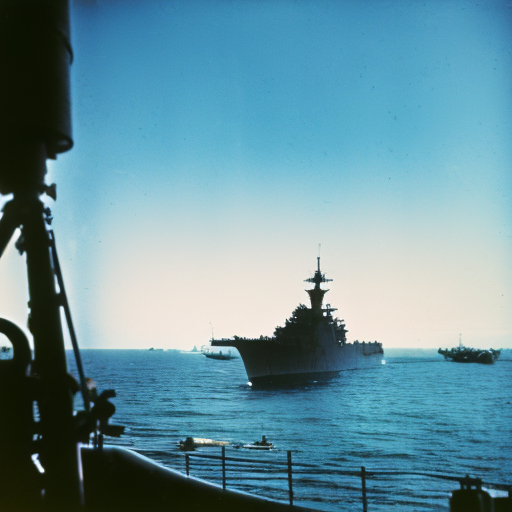Last Battle of the Battleship Bismarck
The last battle of the battleship Bismarck took place during World War II and resulted in the sinking of one of Germany’s most powerful warships. The Bismarck, named after the German chancellor Otto von Bismarck, was commissioned in August 1940 and played a significant role in the German Navy’s operations in the Atlantic.
Background:
The Bismarck was part of Germany’s plan to challenge British naval supremacy and disrupt Allied shipping in the Atlantic. It was armed with eight 15-inch guns and had a top speed of 30 knots, making it a formidable opponent. In May 1941, the Bismarck set sail on its first and only combat mission, codenamed Operation Rheinübung.
Battle of the Denmark Strait:
On May 24, 1941, the Bismarck encountered the British battlecruiser HMS Hood and the battleship HMS Prince of Wales in the Denmark Strait. In a fierce engagement, the Bismarck fired a salvo that hit the Hood’s ammunition magazine, causing a catastrophic explosion and sinking the ship within minutes. This victory was a significant blow to the British Navy.
Pursuit and Damage:
Following the sinking of the Hood, the Bismarck was pursued by the British Navy. Despite sustaining damage from the Prince of Wales, the Bismarck managed to escape into the open ocean. However, the ship’s fuel tanks had been damaged, reducing its speed and range.
Air Attacks:
The British launched multiple air attacks on the Bismarck to prevent it from reaching a French port for repairs. On May 26, 1941, the Royal Air Force launched torpedo attacks, damaging the Bismarck’s rudder and making it difficult for the ship to maneuver. The next day, the British Fleet Air Arm launched another attack, hitting the Bismarck with torpedoes that further crippled the ship.
Final Battle:
On May 27, 1941, the Bismarck was engaged by a British fleet consisting of the battleships HMS King George V and HMS Rodney, as well as several cruisers and destroyers. The British ships relentlessly pounded the Bismarck, causing severe damage and reducing its ability to fight back.
Sinking of the Bismarck:
Despite putting up a valiant defense, the Bismarck was eventually overwhelmed by the superior firepower of the British fleet. The ship’s guns were silenced, and it began to sink. In a final act of defiance, the Bismarck’s crew scuttled the ship to prevent it from falling into enemy hands. Only 115 of the ship’s crew of over 2,200 survived the battle.
Impact:
The sinking of the Bismarck was a significant victory for the British Navy and a turning point in the Battle of the Atlantic. It demonstrated the vulnerability of even the most powerful warships and boosted British morale. The loss of the Bismarck also had a psychological impact on the German Navy, as it highlighted the limitations of their naval capabilities.
Legacy:
The last battle of the battleship Bismarck remains a notable event in naval history. The ship’s wreckage was discovered in 1989, lying on the seabed over 4,700 meters deep. The discovery provided valuable insights into the final moments of the Bismarck and allowed for a more complete understanding of the battle.
In conclusion, the last battle of the battleship Bismarck was a decisive engagement that resulted in the sinking of one of Germany’s most powerful warships. The Bismarck’s defeat had a significant impact on the outcome of World War II and remains a notable event in naval history.












